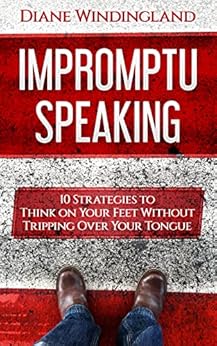
Impromptu Speaking: 10 Strategies to Think on Your Feet Without Tripping Over Your Tongue
In "Impromptu Speaking: 10 Strategies to Think on Your Feet Without Tripping Over Your Tongue", Diane Windingland offers a comprehensive guide to the art of impromptu speaking, providing readers with practical strategies and techniques to overcome the fear of public speaking and deliver persuasive and engaging presentations without preparation.
Windingland begins by addressing the common challenges faced by impromptu speakers, such as anxiety, lack of confidence, and difficulty organizing thoughts. She then introduces a step-by-step process for preparing for and delivering impromptu speeches, emphasizing the importance of audience analysis, message development, and practice.
The book delves into ten key strategies for effective impromptu speaking, including:
- Embrace the Challenge: Shifting the mindset from fear to excitement and viewing impromptu speaking as an opportunity for growth and connection.
- Know Your Audience: Understanding the audience's needs, interests, and expectations to tailor the message accordingly.
- Develop a Clear Message: Identifying the main points and supporting evidence to convey a concise and compelling message.
- Organize Your Thoughts: Structuring the speech with an introduction, body, and conclusion to ensure logical flow and coherence.
- Use Visual Aids Wisely: Incorporating visual elements like slides or props to enhance understanding and engagement.
- Engage with the Audience: Establishing a connection with the audience through eye contact, body language, and interactive elements.
- Manage Nervousness: Employing relaxation techniques, deep breathing exercises, and positive self-talk to manage anxiety and maintain composure.
- Practice, Practice, Practice: Regularly rehearsing impromptu speeches to build confidence, improve fluency, and refine delivery skills.
- Stay Updated and Informed: Keeping abreast of current events, trends, and industry knowledge to have a reservoir of relevant content for impromptu speeches.
- Seek Feedback and Improve: Actively seeking feedback from peers, mentors, or audience members to identify areas for improvement and enhance speaking skills.
Windingland concludes the book by emphasizing the importance of continuous learning and improvement in the art of impromptu speaking. She encourages readers to embrace challenges, stay curious, and never stop practicing to master the skill of speaking confidently and effectively without preparation.
Rating: